Straight from the pot to cozy bowls, this fresh vegan pumpkin soup recipe is brimming with veggies and beans for a clean-eating recipe using diced fresh pumpkin.
This recipe takes a different approach than many pumpkin soup recipes because it's made without coconut cream or full-fat coconut milk. As a broth-based, not pureed soup, the flavor comes from healthy vegetables, pinto bean protein, tomato paste, and common spices.
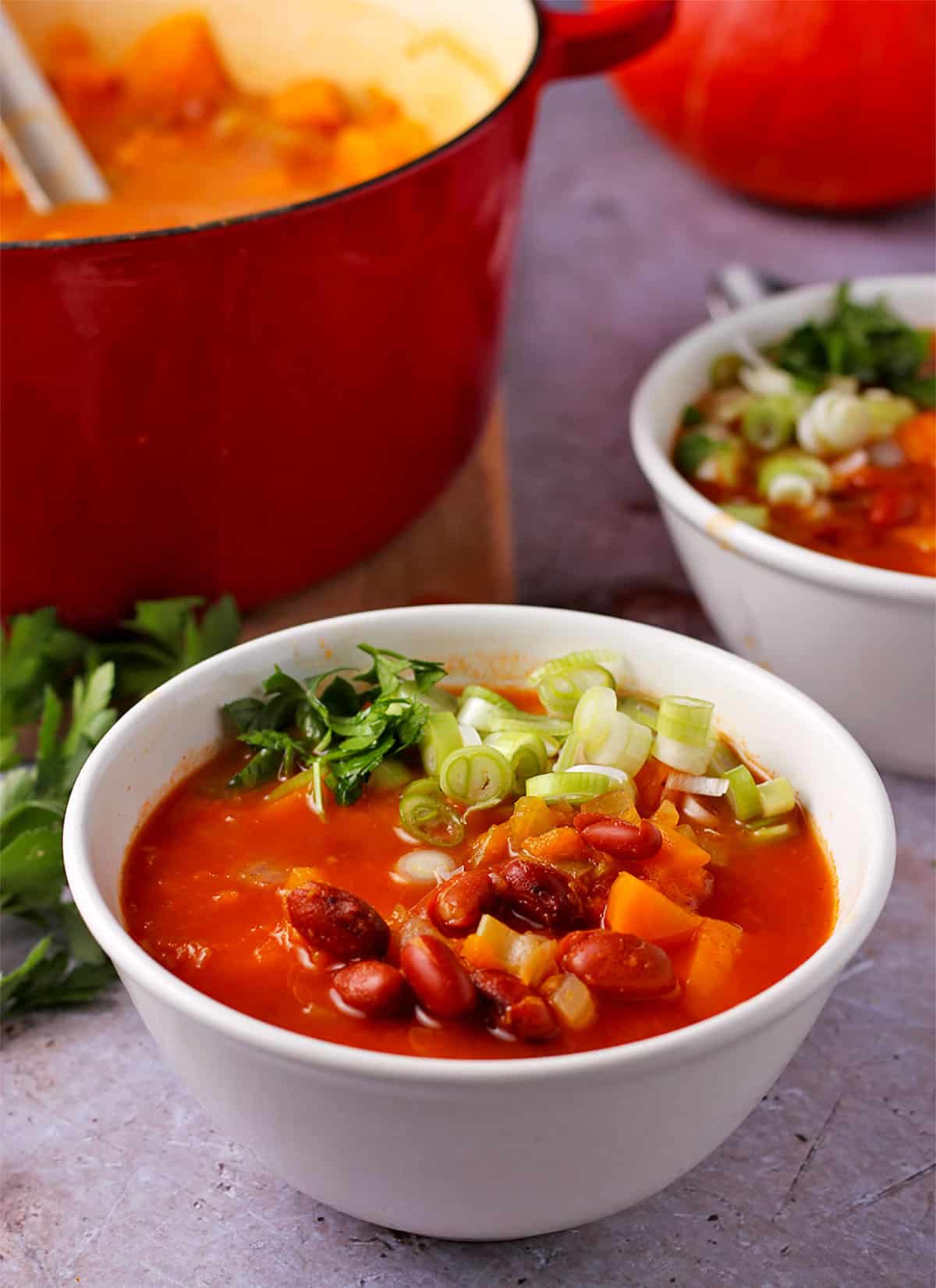
Table of Contents
Why You'll Love This Recipe
- An easy recipe with simple ingredients and a cooking time of 30 minutes.
- A great seasonal fall soup using fresh pumpkin, butternut squash, or sweet potatoes.
- Make it ahead - it's even tastier the next day and freezer-friendly.
- Want to know how to cut a pumpkin for cooking? I've got step-by-step instructions below.
Ingredients, Notes, and Substitutions
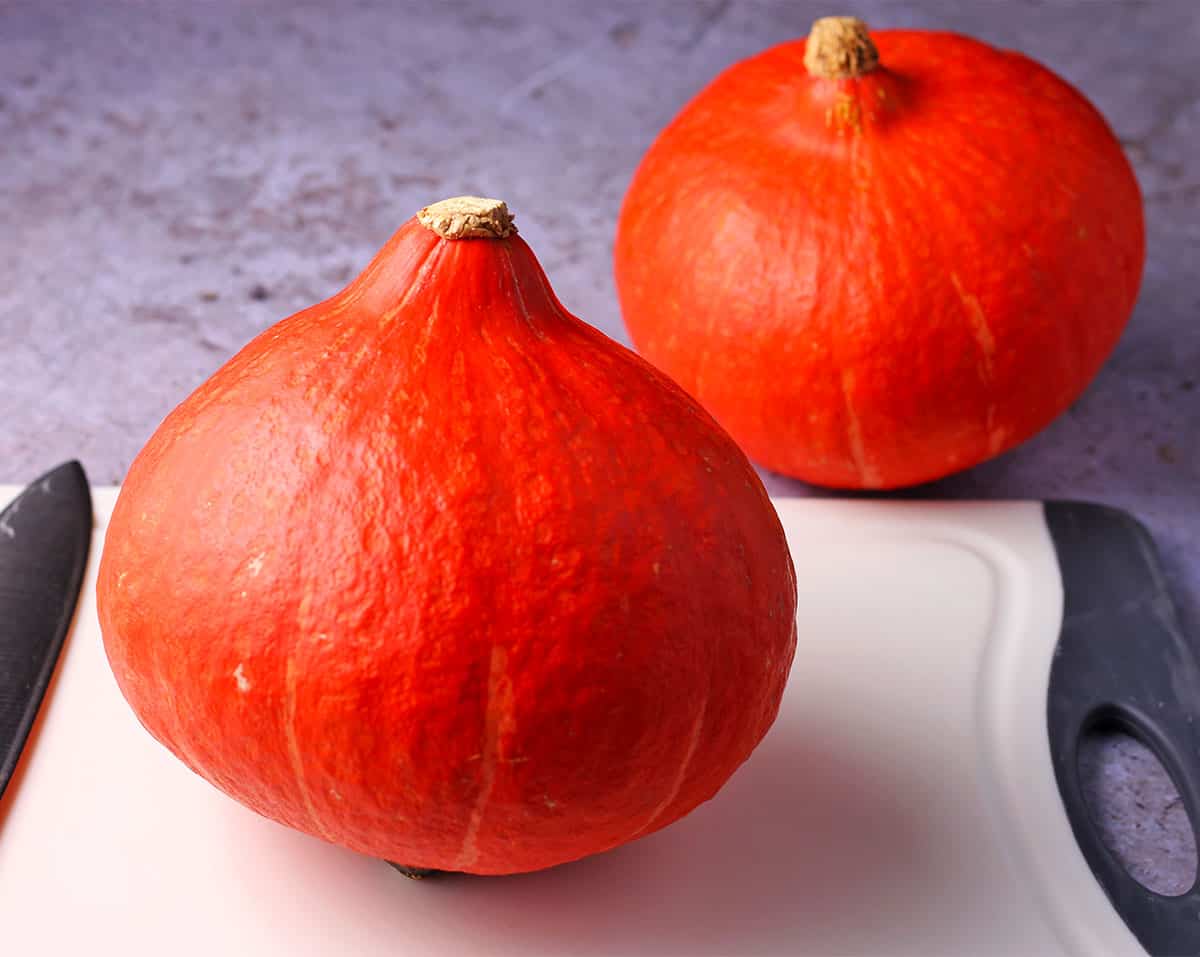
Pumpkin. Use a small, fresh, regular pumpkin. Sugar pumpkins (pie pumpkin) are nice, too. Other options include 2 medium sweet potatoes, a large butternut, or acorn squash.
Pinto beans. I've always made this recipe with pinto beans, but honestly, any, like black beans, borlotti, white, or kidney beans, can be used.
Vegetable broth. Use a good quality broth or vegetable stock cubes. For more tomato flavor, and if you can find it, use tomato veggie broth.
Paprika. I love the flavor of smoked paprika, but it can be strong, so use regular paprika. For extra spice, add a pinch of cayenne pepper or red pepper flakes.
Please see the recipe card at the bottom of this post for the complete list of ingredients with measurements plus recipe instructions.
Recipe Variations
- For creamy pumpkin soup, puree a little of the soup using an immersion blender before adding the beans.
- Roasted pumpkin with a little salt and black pepper is a great option. The pumpkin cubes will be firmer in this case, but if you're roasting the pumpkin seeds anyway...
- Switch up the spice profile by adding a pinch of garam masala or, yes, pumpkin pie spice.
Step-by-Step Instructions
If you've only carved faces into pumpkins, no worries. They are as easy as any squash to prep.
How to Cut a Pumpkin for Cooking
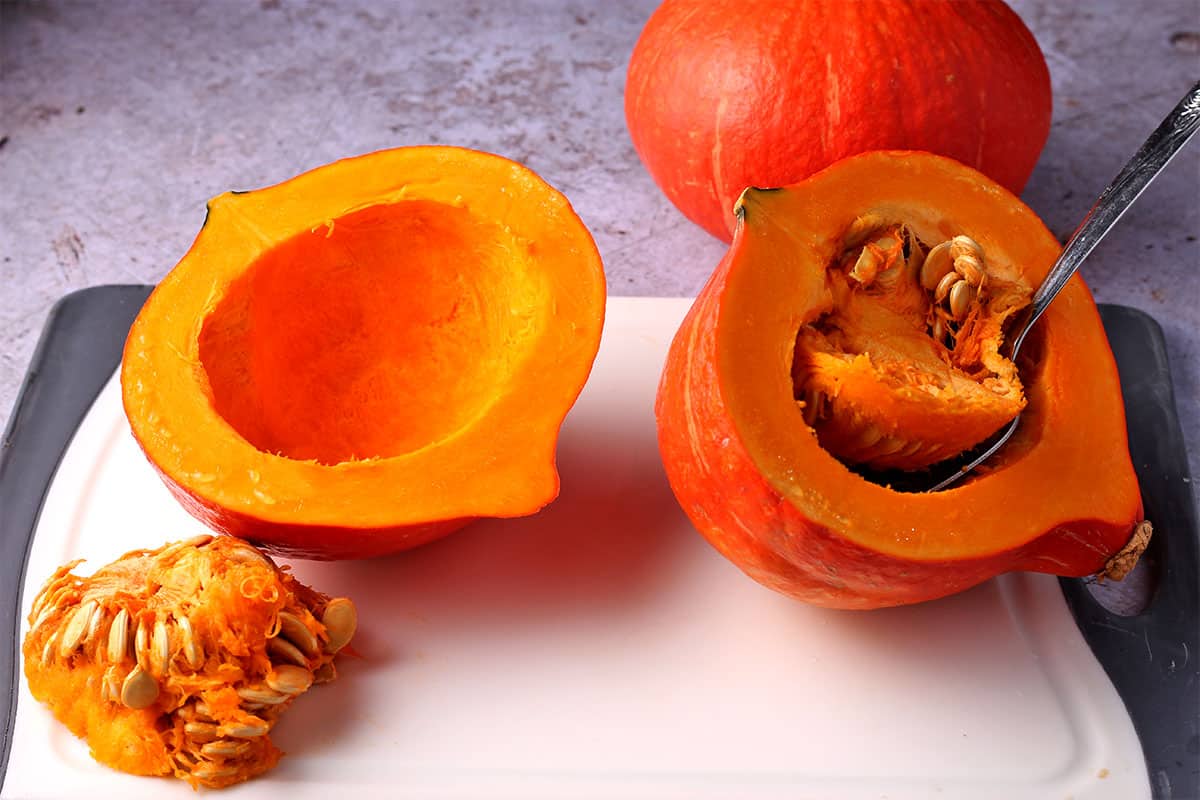
Step 1: Use a sharp knife to cut off the stem. Cut the pumpkin in half and clean out the seeds and stringy middle.
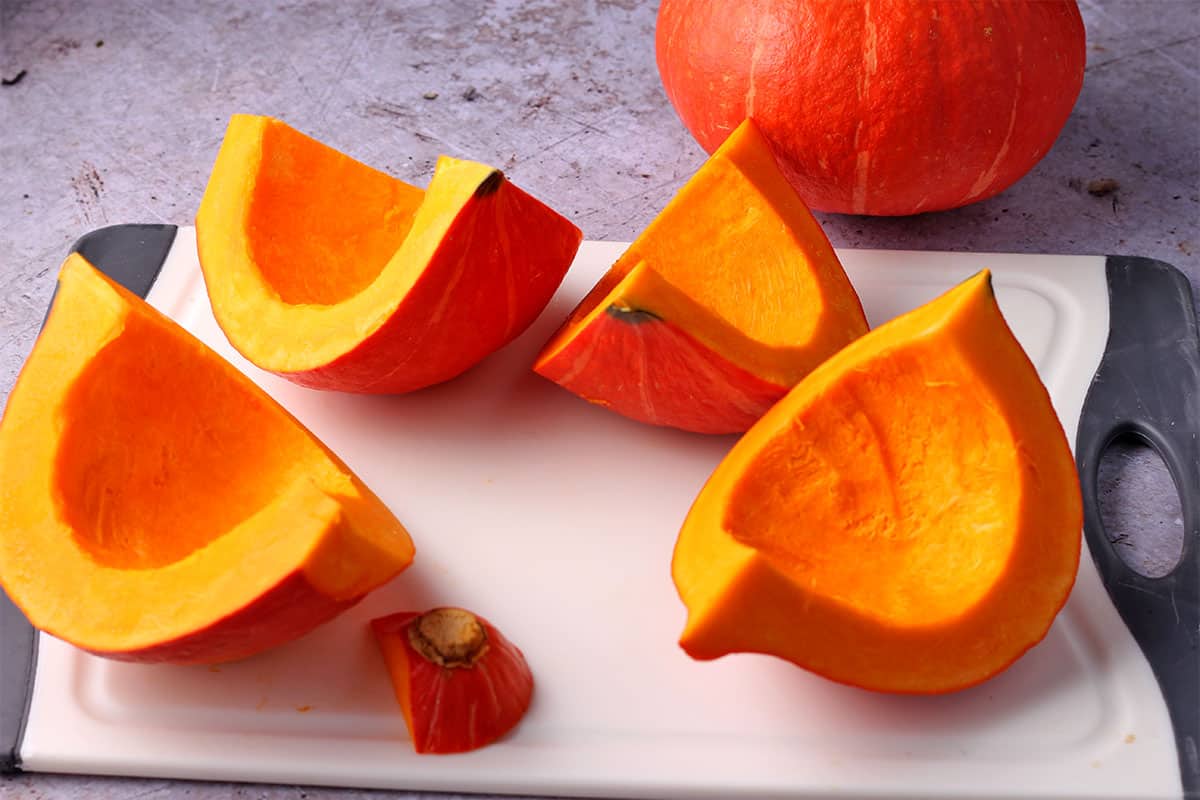
Step 2: Cut the pumpkin halves in half (now you have 4 pieces). Cut off the end and remaining stem if necessary.
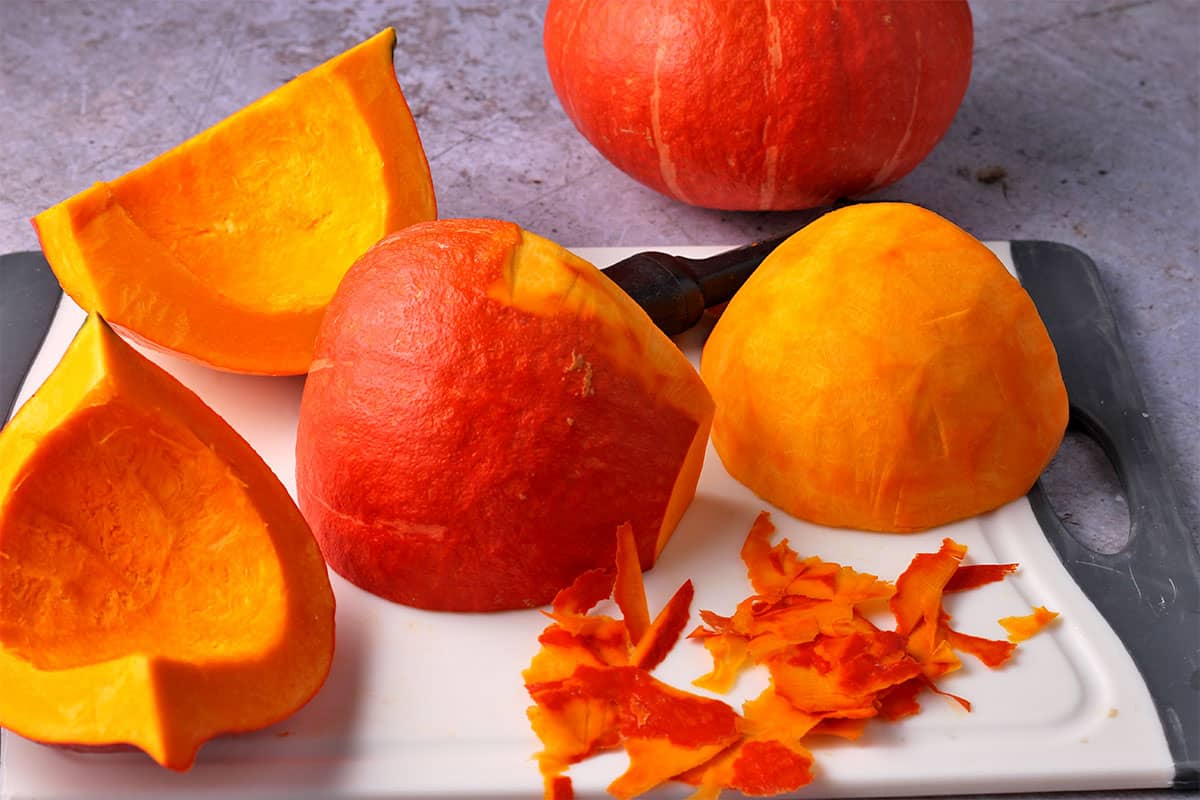
Step 3: Use a vegetable peeler to remove the skin from each quarter.
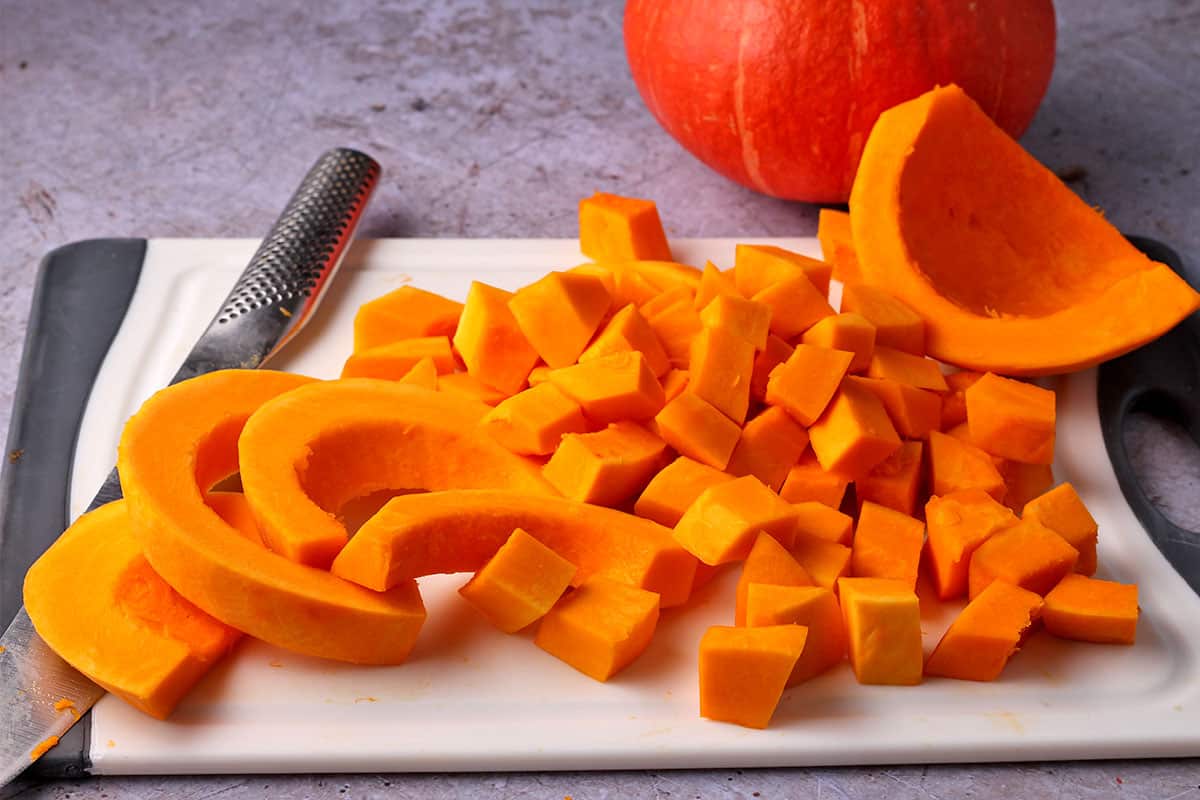
Step 4: Dice the quarters into cubes (about 1-inches).
Now, Let's Make Pumpkin Soup!
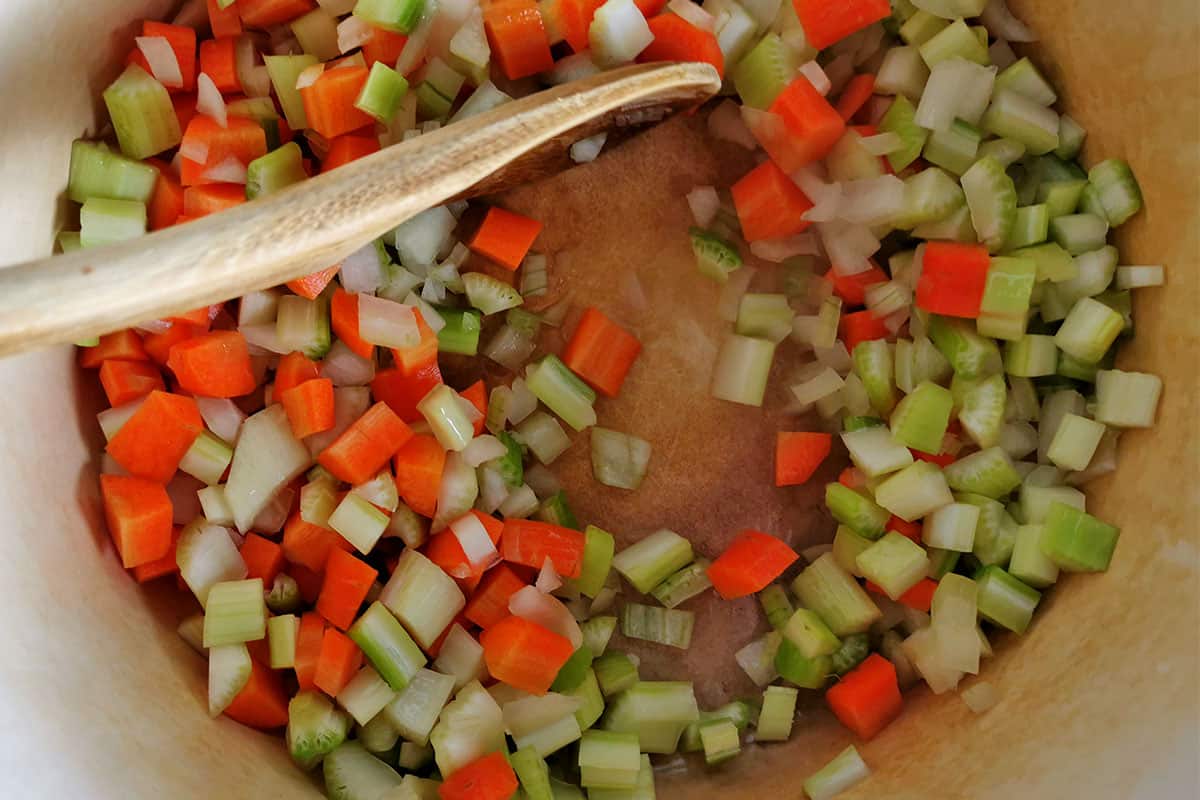
Step 1: Heat a large pot to medium heat. Add the onions, carrots, and celery.
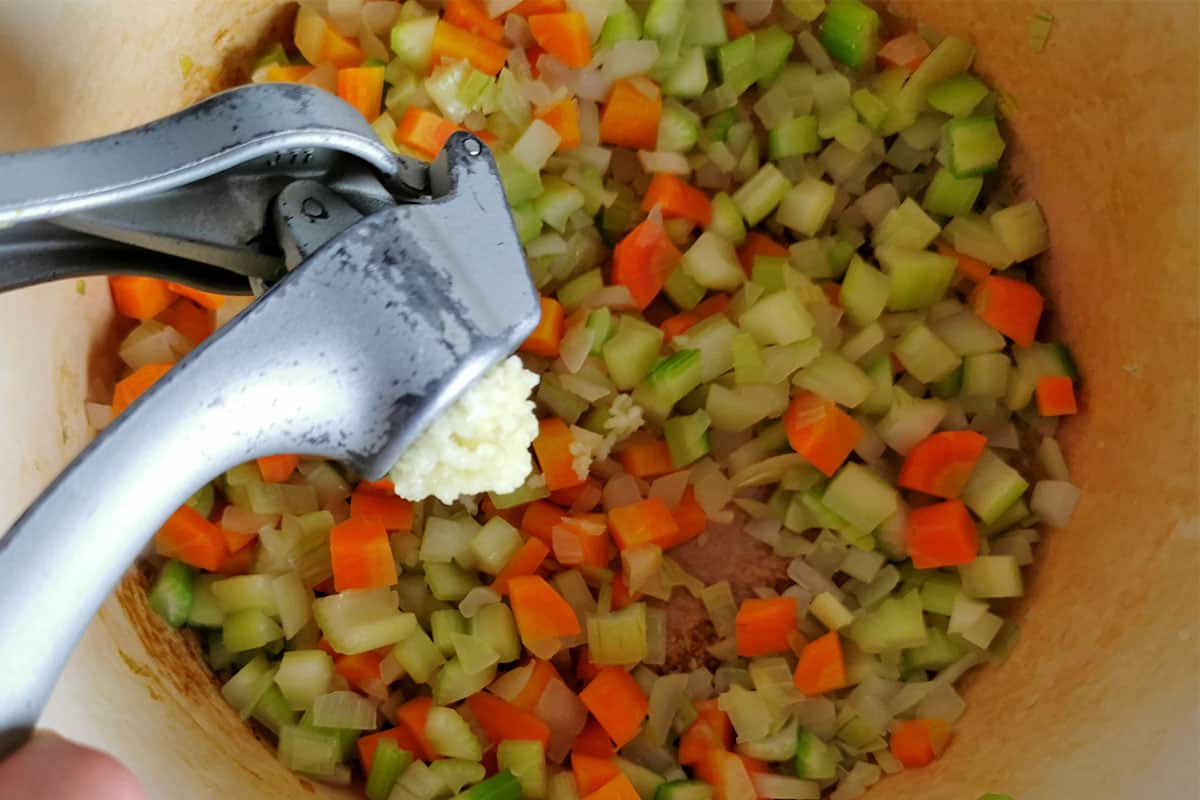
Step 2: Add the garlic and spices.
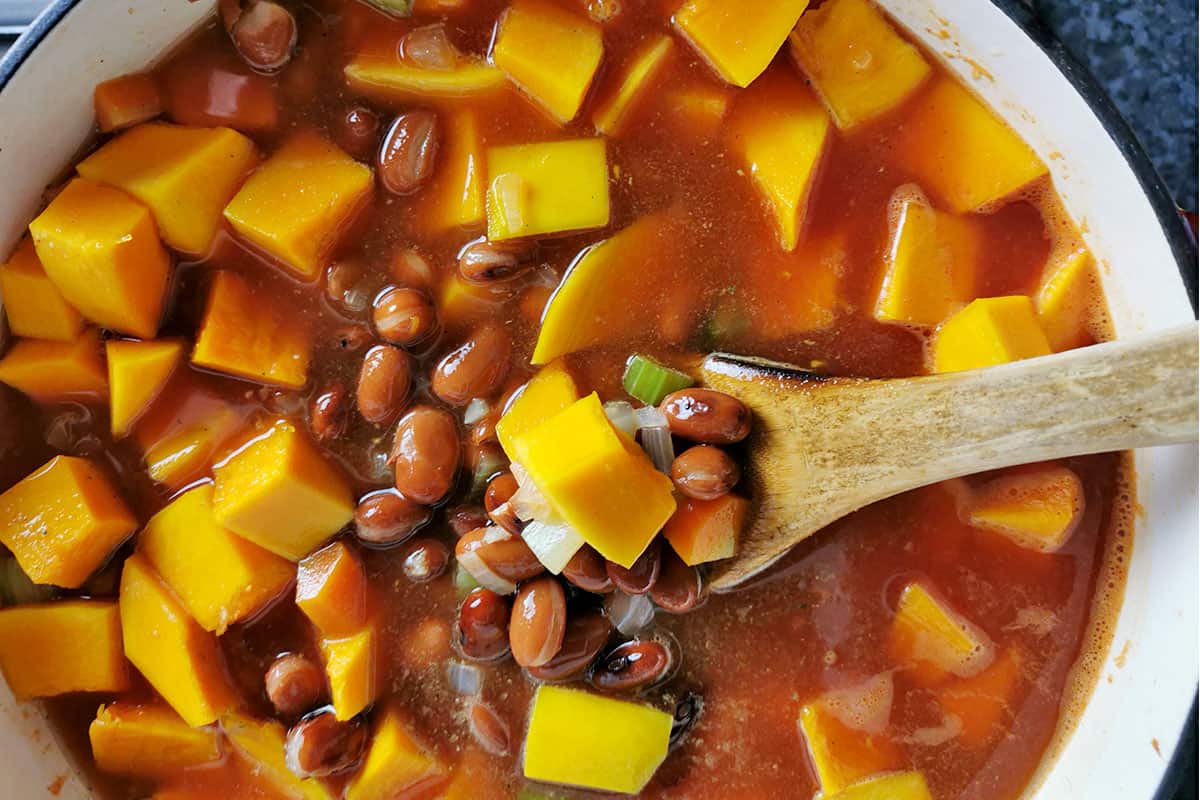
Step 3: Stir in the tomato paste and broth. Then, add the pumpkin and beans.
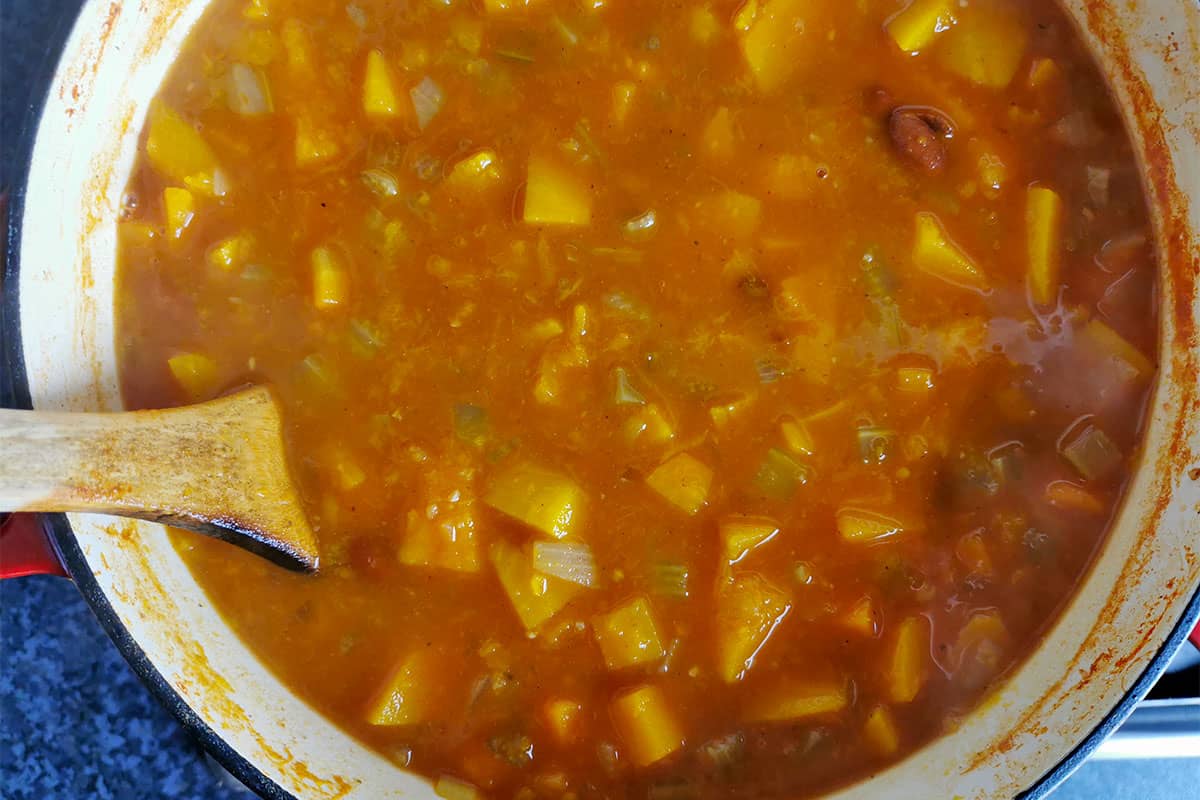
Step 4: Adjust to medium-low heat and cover the pot. Simmer for 25-30 minutes.
Pro Tips
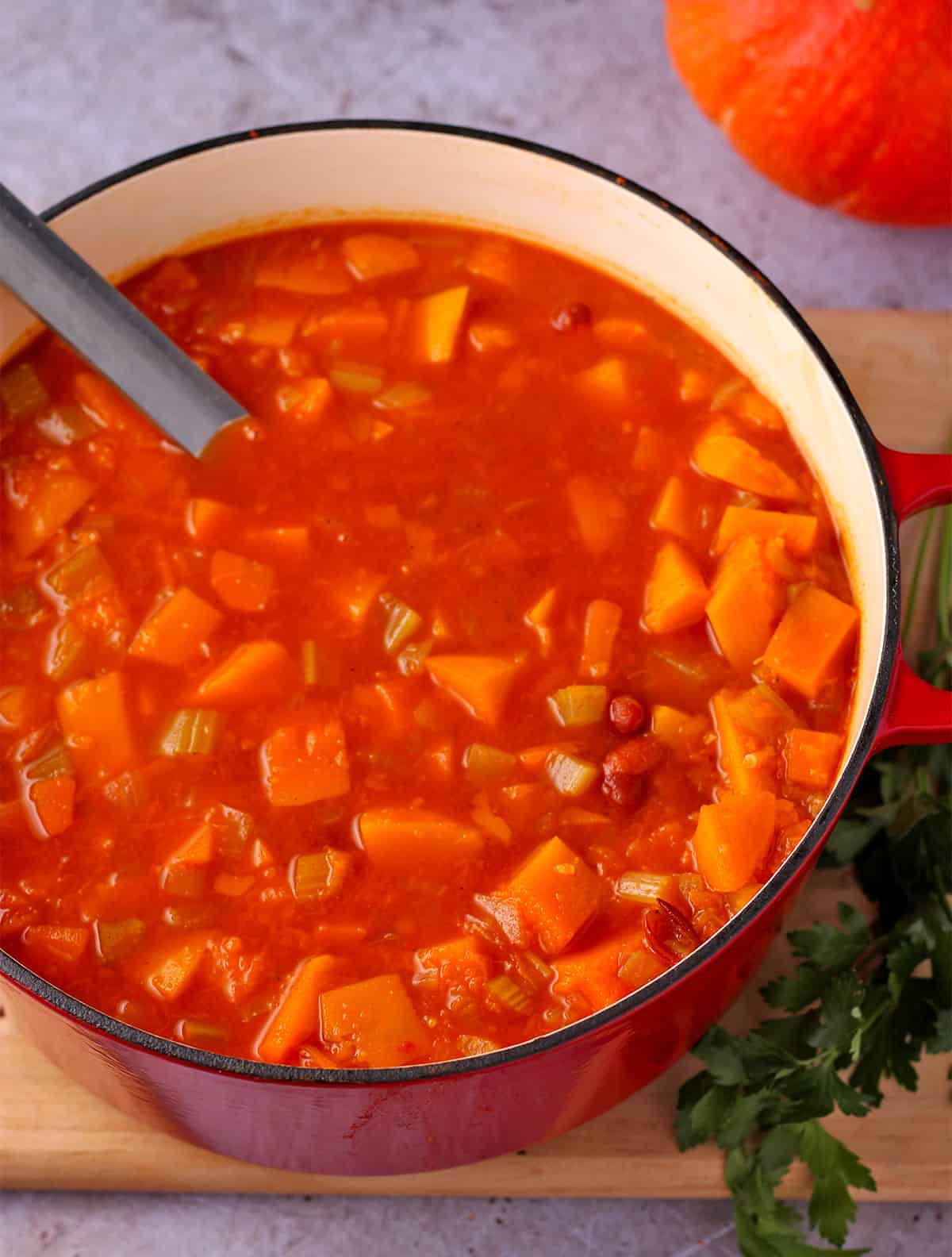
- Always heat the pot before adding onions and other veggies. This helps keep them from sticking when you cook without oil.
- Keep the veggies moving as they cook. Add water, a tablespoon at a time, if they stick.
- As the pumpkin cooks and softens, mash a few pieces against the pot's side for a creamy soup.
Serving Suggestions
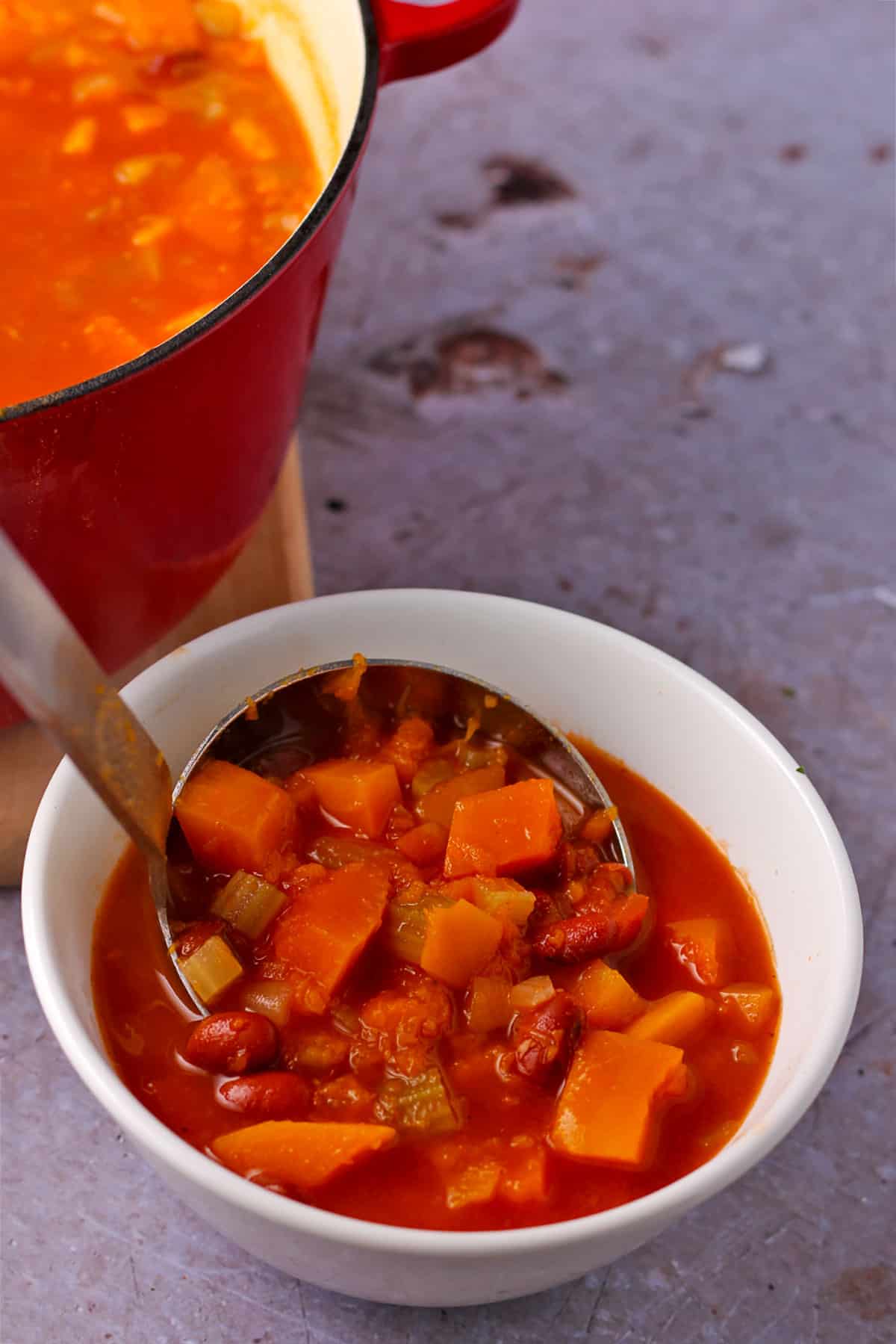
Garnish the soup with sliced green onions and chopped fresh parsley or cilantro. This is great as a main dish with crusty bread or a fall salad like apple cranberry salad or spicy Israeli couscous salad.
Frequently Asked Questions
Store leftover soup in an airtight container for 4-5 days. It is also freezer-friendly. Let it cool to room temperature, then place it in a tight container or freezer bag. Freeze for 3 months.
Simmering for longer is the best way to thicken pumpkin and other creamy soups. As the pumpkin cubes and other vegetables break down, the soup naturally thickens. You can assist the process by mashing some pumpkin as it cooks.
More Vegan Soup Recipes
Do you have a question or recipe request or need a cooking tip? Leave a comment below or contact Denise. I’m here to help! If you want more healthy vegan recipes, please subscribe to my newsletter or follow me on Facebook or Pinterest for the latest updates.
If you make this recipe, please leave a ⭐⭐⭐⭐⭐ rating. It’s much appreciated!
👩🏻🍳 Recipe
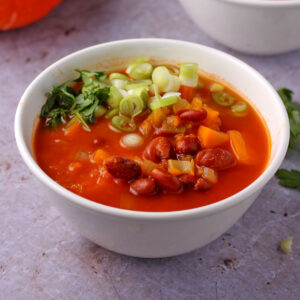
Fresh Vegan Pumpkin Soup Recipe
Rate this Recipe:
Ingredients
- 1 small pumpkin - peeled and diced
- 1 medium onion - diced
- 2 medium carrots - peeled and diced
- 2 stalks celery - diced
- 3 cloves garlic - pressed or minced
- 2 teaspoons ground cumin
- 1 teaspoon paprika - smoked or regular
- 6 cups vegetable broth
- 2 tablespoons tomato paste
- 3 cups cooked pinto beans - 2 cans, see notes
- 4 medium green onions - thinly sliced for garnish
- salt and black pepper to taste
Instructions
- Heat a medium soup or stew pot over medium heat. Add the onions, carrots, and celery. Cook the veggies for about 5 minutes until they soften.
- Add the garlic, cumin, and paprika and stir for 30 seconds.
- Pour in the vegetable broth and tomato paste and stir to mix in the tomato paste. Use the broth to clear the bottom of the pot.
- Add the pumpkin and beans and mix everything.
- Cover and simmer the soup for about 25-30 minutes until the pumpkin is tender. To make the soup thicker, use a wooden spoon to mash some of the pumpkin as it cooks.
- Season with salt and black pepper.
- Serve in individual bowls and garnish with sliced scallions or chopped parsley.
Notes
- You can use a large can of pumpkin for this recipe; however, do not use pumpkin puree unless you want a super creamy soup.
- I used canned pinto beans for this recipe. Black beans, borlotti, white, or kidney beans can be used. If you have a can of mixed beans, toss them in.
- I love the flavor of smoked paprika, but it can be strong, so use regular paprika. For extra spice, add a pinch of cayenne pepper or red pepper flakes.
- Store leftover soup in an airtight container for 4-5 days. It is also freezer-friendly. Let it cool to room temperature, then place it in a tight container or freezer bag. Freeze for 3 months.
Nutrition
Nutritional information is an estimation only.


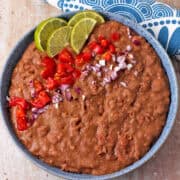
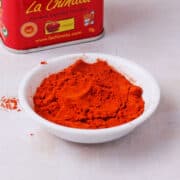
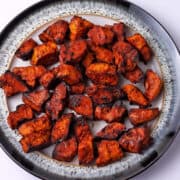

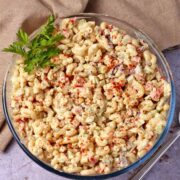
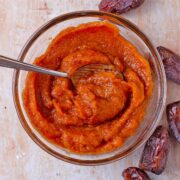

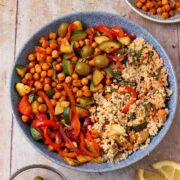
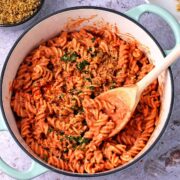
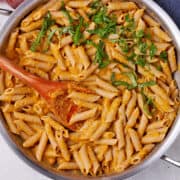
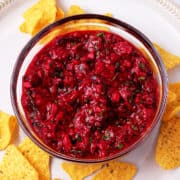
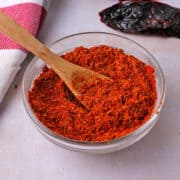

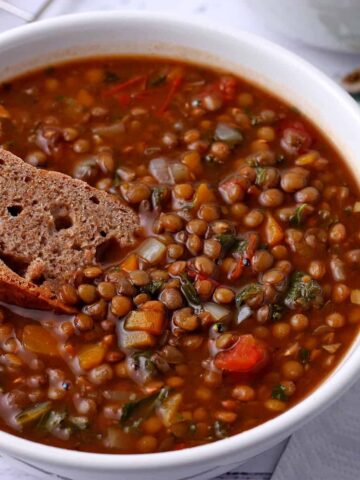
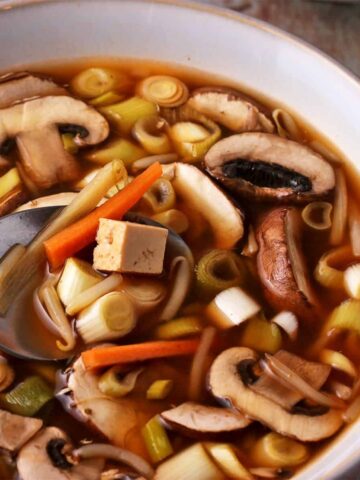
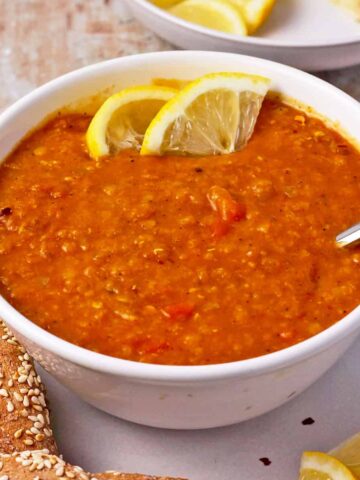
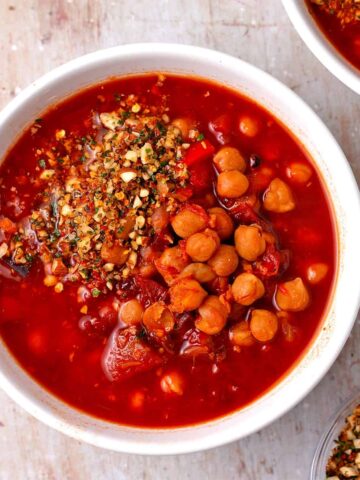
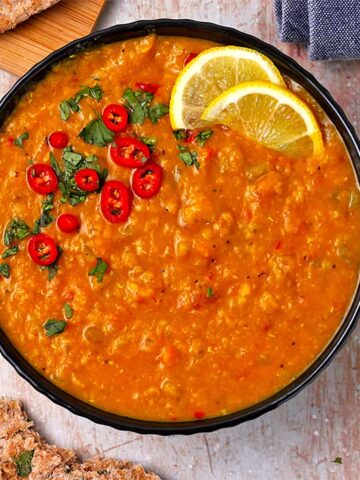
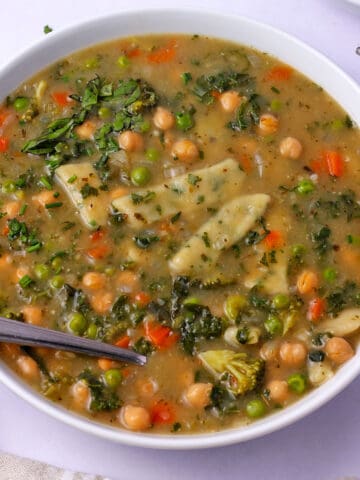
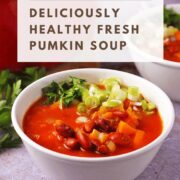
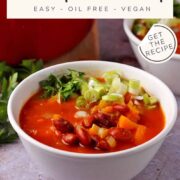
Leave a Reply